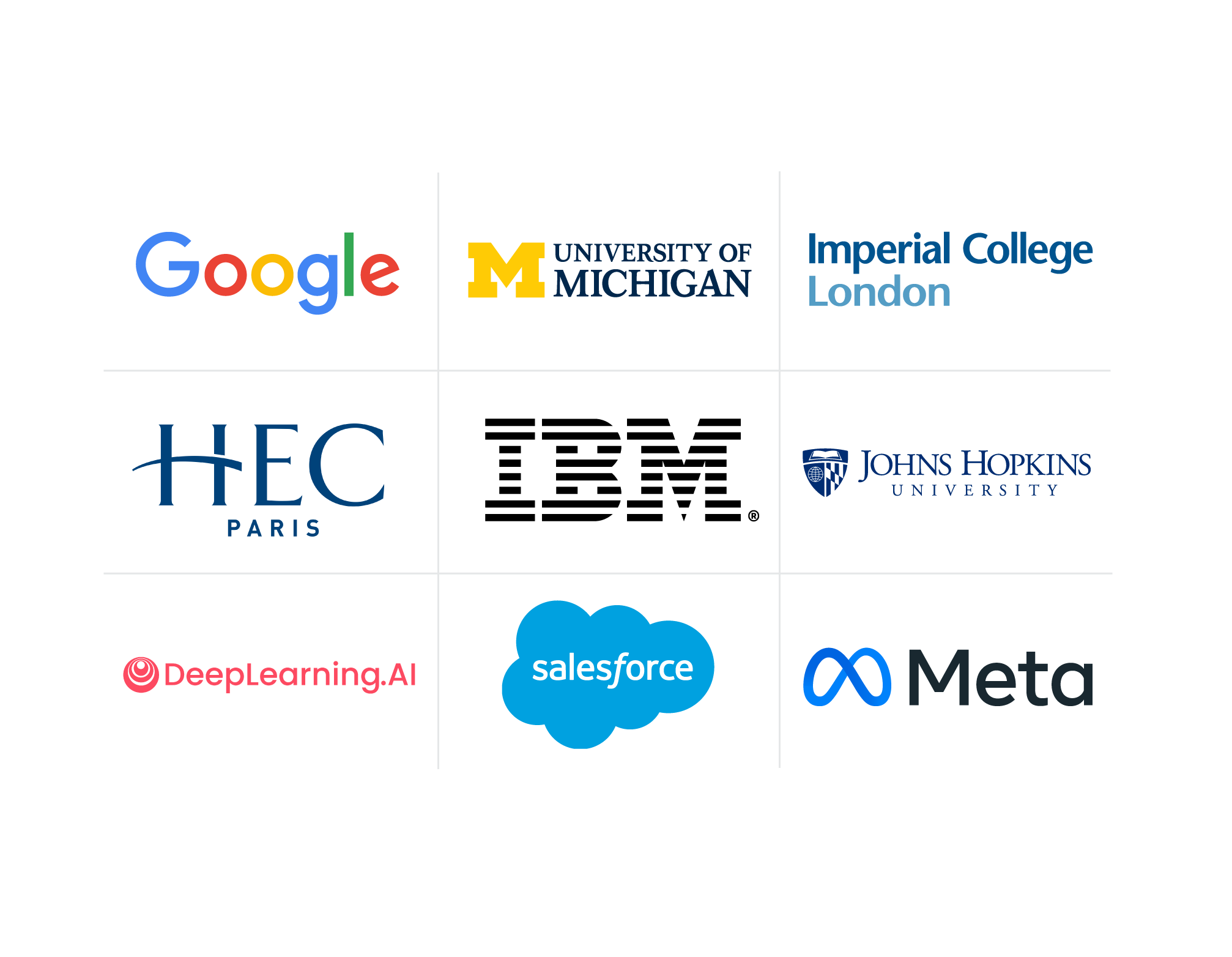Navigating Talent Agility in the Corporate Landscape
Discover the importance of talent agility for companies that want to position themselves for future success in an uncertain business environment, as well as strategies to increase your own talent agility.
![[Featured image] A woman is taking questions from attentive employees in a training course to increase talent agility.](https://d3njjcbhbojbot.cloudfront.net/api/utilities/v1/imageproxy/https://images.ctfassets.net/2pudprfttvy6/pFMBY23Qy7WAGMS3D9JDc/3f3cf25a385cf4771a8b009da3c1a314/GettyImages-1322230232.jpg?w=1500&h=680&q=60&fit=fill&f=faces&fm=jpg&fl=progressive&auto=format%2Ccompress&dpr=1&w=1000)
Talent agility refers to your team’s ability to adapt and respond effectively to unexpected changes in the business environment. To succeed in today’s corporate landscape, companies need to develop a flexible workforce with talent agility to pivot to meet the needs of an ever-evolving and competitive market. Your company’s talent agility will allow you to change your business processes to overcome challenges and thrive in uncertainty.
Explore how talent agility benefits companies and tips for helping your workforce become more adaptable in the face of uncertainty.
What does it mean to have talent agility?
Talent agility speaks to your team’s ability to rise to the occasion when unexpected factors change the business landscape. These factors may reflect changes to your specific industry, your target market, or the greater economic outlook.
According to the 2025 World Economic Forum Future of Jobs Report, employers expect to experience a 22 percent market churn of jobs in the next five years, a measure that predicts how many jobs will be eliminated after considering the number of emerging jobs that will be added to the job market. These numbers in total suggest a net increase of 78 million (or 7 percent) jobs in the next five years [1]. Driven in part by the rapid advance and adoption of technology like cloud computing and artificial intelligence (AI), companies must remain agile to adapt as the markets change in unprecedented ways.
In your company, talent agility might look like flexibility in roles and responsibilities. By cross-training your employees to manage multiple tasks, you can schedule employees in an adaptable way. For example, if you own a restaurant, you might hire cooks, kitchen assistants, wait staff, and hosts. If your employees train to work in multiple positions, you have more flexibility when unforeseen challenges arise—an illness that leaves you understaffed, special events in the area when you expect more customers, or slow foot traffic, for instance. Talent agility can also look like bringing people with new skills into your company so that your collective skill set evolves with the market. Whatever your approach, talent agility is employee-focused and relies on the skills you cultivate or incorporate into your workforce.
What are the benefits of talent agility?
Talent agility can make you more competitive. It informs your recruitment strategy so that you can retain and attract talented employees, then helps these employees improve their skills to grow and evolve with the company. You may offer your employees opportunities to reskill or grow their skills with a learning and development program, which will help train them for future leadership and internal promotions as positions become available. Internal recruitment can save time and money and help make your employees happier, leading to better morale and higher retention.
Talent agility positions your company for success in an uncertain future. According to the World Economic Forum, 59 in 100 workers will require training by 2030 [1]. Talent agility gives you a framework for planning learning and development initiatives to build a more resilient workforce that frames challenges as opportunities.
Components of talent agility
While talent agility will look different in your company compared to a company in a different industry or business strategy, you should consider key components to help you build agility in your workforce. These include recruitment and retention strategies, performance management, diversity, and a positive company culture.
Bringing new skills into your workforce
Being agile means bringing new skills into your workforce as they become relevant to your industry. For example, many managers are spending resources to develop AI and big data skills at their company, even if those skills aren’t particularly crucial to their business strategy. Instead, these managers are looking toward a future that increasingly relies on AI and big data; managers want these skills represented in their workforce as a prediction that they will become more critical to their industry. When AI and big data skills are represented within a company’s business strategy, they tend to be an essential part of the company’s big picture.
If you want your workforce to reflect changing priorities, you can either invest in training and development programs to help your current employees improve their skills or hire new individuals who already possess relevant skill sets.

Recruitment and retention
Recruitment and retention are key components of talent agility. Every time you bring a new employee into your company, you’re running the risk that they will not be a good fit and will ultimately leave. When you hire internally from employees who are already a good fit in your company culture and with the organization’s goals, you reduce that risk because you already know they’ll work out. You can also gain a reputation as a company that offers training and development opportunities, making you a more attractive candidate to outside hires.
Performance management
Another component of an agile workforce is performance management. Talent agility means consistent meetings with your staff, likely in a one-on-one setting, to set and review goals, discuss performance, recommend learning and development opportunities, evaluate pay, and more. By setting an expectation for consistent, frequent communication, your staff will understand your expectations better and be better able to communicate problems they encounter or resources they need to succeed. Frequent communication is essential to keeping the entire team working toward the same organizational goals in an environment that can rapidly change.
Diversity
Diversity is another vital component of talent agility. Teams with diverse viewpoints who learn from one another’s perspectives have been shown to be more effective, according to the Harvard Business Review [2]. By maintaining a diverse workplace with a company culture that encourages and supports diversity, you may gain a better reputation among potential candidates, particularly those from underrepresented groups. Diversity also allows you to gain insight from your employees’ knowledge and experiences about being a member of an underrepresented group. For example, a diverse group of employees determining marketing strategy will have more insight into how various segments of the company’s target market will receive the brand’s messaging.
Positive company culture
A positive company culture is also an important component of agility because employees' interconnectedness contributes to their overall well-being, happiness, and investment in the company’s success. It’s vital for employees to feel valued and to have a sense of belonging in the workplace for their overall well-being. This translates not only into happier employees but also into employees capable of putting forth their best work and adapting to change as needed. To help cultivate a positive company culture, you can provide your employees opportunities to get to know one another outside of their normal work activities, such as work-sponsored recreation or learning and development opportunities.
Tips for building a talent agile culture
Once you know what talent agility will look like for your company and some of the components you’ll need to include in your talent agility plan, it’s time to implement changes that will make your team more agile. Use these tips to help guide your efforts:
Create opportunities for your employees to learn new things. Learning new things and taking on new challenges can help your employees improve their learning agility.
Look at challenges from a new perspective. Go beyond the traditional approach to doing business and look for new ways to think about your challenges for a more agile approach.
Experiment with new ideas. Agility starts with being flexible enough to experiment with new solutions and ideas, even those that may challenge the status quo.
Create a candidate pool. In addition to reskilling your employees through training, you can create a pool of candidates with skills you may need in the future. Having these applicants on file will allow you to quickly call in new professionals as industry needs change.
Getting started with Coursera
Talent agility—your team’s ability to change and adapt to business disruptions—can help you strengthen your position in the market and succeed in an uncertain future. Talent agility can help strengthen your recruitment and retention strategies by developing your current employees' skills and making your company look more attractive to potential candidates. You can increase your company's talent agility and overall resilience by thinking through business processes such as recruitment, diversity, or performance management.
For a more agile workforce, consider offering your team the opportunity to learn new skills and develop their capabilities with courses available on Coursera. For example, you can encourage a leadership culture with the Leadership Academy, a versatile program to help you build proficiency at all levels of your company. On Coursera, you can also find similar programs for Tech, Data and Analytics, Finance, and Marketing, as well as the robust Career Academy that includes guided projects for hands-on learning in various technical skills and digital tools.
Article sources
World Economic Forum. “The Future of Jobs Report 2025, https://www.weforum.org/publications/the-future-of-jobs-report-2025/digest/.” Accessed May 15, 2025.
This content has been made available for informational purposes only. Learners are advised to conduct additional research to ensure that courses and other credentials pursued meet their personal, professional, and financial goals.

